The 1896 Morgan Silver Dollar value ranges from $47 for worn coins to over $1,695 for high-grade specimens. Philadelphia (no mint mark) and New Orleans (“O”) versions are common in circulated grades, while the 1896-S (San Francisco) is significantly scarcer and more valuable. Condition is crucial: Good to Very Good coins worth $47-$57, Uncirculated start at $65, MS-65 grade reaches $210, and MS-67 can fetch $1,695. Rare proof coins command $4,500+. Value depends on condition, mint mark, luster, strike quality, and whether it’s a proof or regular strike coin.
That dusty Morgan dollar from 1896 sitting in your collection could be worth anywhere from the price of a nice dinner to a down payment on a car. The difference? Three crucial factors that most casual collectors overlook when evaluating their coins. Understanding mint marks, grading nuances, and specific error varieties transforms what looks like common silver into potentially significant value.
Understanding the Three Mint Varieties of 1896
The United States Mint produced Morgan dollars at three facilities in 1896, each leaving its distinctive mark on numismatic history. Philadelphia struck 9,976,000 pieces without any mint mark, making these the most common variety you’ll encounter. New Orleans added 4,900,000 coins bearing the “O” mint mark on the reverse below the eagle’s tail feathers. San Francisco contributed just 5,000,000 pieces marked with an “S” in the same location.
While these mintage figures might suggest similar availability today, survival rates tell a different story. The 1896-S experienced higher rates of melting during the Pittman Act of 1918, when over 270 million Morgan dollars were destroyed. This legislative silver liquidation hit San Francisco mintages particularly hard, creating modern scarcity that didn’t exist initially.
Finding your mint mark requires examining the coin’s reverse side. Look directly below the wreath ribbon where the eagle’s tail feathers point downward. Philadelphia coins display no letter in this space. The “O” and “S” marks appear as small, raised letters that should be clearly visible even on heavily circulated examples.
Accurate Grading: Where Your Real Value Hides
Professional coin grading follows the 70-point Sheldon Scale, ranging from Poor-1 through Perfect Mint State-70. For 1896 Morgan dollars, understanding these grade distinctions means grasping the difference between $50 and $1,500 for essentially the same coin.
Circulated Grades and Their Values:
| Grade | Philadelphia (No Mark) | New Orleans (O) | San Francisco (S) |
|---|---|---|---|
| Good-4 | $47 | $48 | $55 |
| Very Good-8 | $49 | $50 | $58 |
| Fine-12 | $51 | $52 | $62 |
| Very Fine-20 | $53 | $54 | $68 |
| Extremely Fine-40 | $55 | $56 | $75 |
| About Uncirculated-50 | $58 | $59 | $95 |
Circulated 1896 Morgan dollars show wear on Liberty’s cheek, the hair above her forehead, and the cotton leaves in the wreath. The eagle’s breast feathers flatten noticeably on coins below Fine grade. Once these high points display smooth, worn surfaces instead of crisp details, you’re looking at circulated specimens worth their weight primarily in silver content plus modest numismatic premium.
Mint State Premiums:
| Grade | Philadelphia | New Orleans | San Francisco |
|---|---|---|---|
| MS-60 | $65 | $68 | $145 |
| MS-63 | $95 | $98 | $285 |
| MS-64 | $135 | $145 | $625 |
| MS-65 | $210 | $235 | $1,850 |
| MS-66 | $485 | $625 | $4,200 |
| MS-67 | $1,695 | $2,150 | $18,500 |
The jump from MS-64 to MS-65 represents the most dramatic value increase for 1896 Morgan dollars. This single grading point separates coins with scattered bagmarks from those displaying exceptional eye appeal with minimal contact marks. Heritage Auctions sold an 1896-S graded MS-67 for $19,200 in January 2023, demonstrating how condition rarity commands exponential premiums at the top end.
Luster quality becomes paramount in Mint State grades. Original cartwheel luster shows concentric rings of light that rotate across the coin’s surface when tilted. Cleaned or artificially enhanced coins lose this natural characteristic, suffering significant value penalties even when structural details remain sharp.
The Scarce 1896-S: Why San Francisco Commands Premiums
Collectors specifically target 1896-S Morgan dollars despite the date’s relatively high original mintage. Several factors contribute to this variety’s enhanced desirability and market strength across all grade levels.
First, San Francisco Mint State survivors appear far less frequently than mintage numbers suggest. While 5,000,000 pieces left the mint, the majority entered immediate circulation in Western states where they received heavy use. Banks and merchants subjected these coins to decades of commercial handling before the 1960s collecting boom rescued remaining examples.
Second, strike quality varies dramatically among 1896-S pieces. Many display weak strikes on the eagle’s breast feathers and the hair detail above Liberty’s ear. Collectors pay substantial premiums for sharply struck examples showing full feather separation and complete hair definition. A weakly struck MS-65 might bring $1,400, while a sharp MS-65 commands $2,200 or more.
Third, the 1896-S frequently exhibits bagmarks concentrated around Liberty’s cheek and in the right obverse field. Finding examples with clean cheeks and minimal field disturbances requires examining multiple specimens. Stack’s Bowers noted that fewer than 1,000 1896-S Morgan dollars likely exist in MS-65 or better condition with strong strikes and choice surfaces.
Auction records confirm the 1896-S market strength. In March 2023, Heritage sold an MS-67+ example with CAC (Certified Acceptance Corporation) approval for $28,800, nearly triple the standard MS-67 value. The CAC designation indicates the coin meets strict quality standards for its grade, representing the finest examples within each category.
Philadelphia and New Orleans: Affordable Entry Points
The 1896 Philadelphia issue represents the most accessible Morgan dollar for budget-conscious collectors. With nearly 10 million pieces struck and substantial bag quantities released from Treasury vaults during the 1960s, Mint State examples remain plentiful in grades through MS-64.
These Philadelphia coins typically display strong strikes with full detail across all design elements. The dies received regular maintenance, producing consistently sharp impressions throughout the production run. Most Uncirculated survivors show attractive frosty luster with minimal toning, though some vault-stored pieces developed attractive peripheral toning that enhances eye appeal.
Common bagmarks appear on Liberty’s cheek, the left obverse field, and the reverse field surrounding the eagle. Cherrypicking for mark-free specimens at MS-63 and MS-64 levels offers value opportunities, as dealers often price these coins generically without noting superior surface preservation.
The 1896-O from New Orleans follows similar value patterns with slightly lower survival rates. New Orleans coins sometimes display weaker strikes on the eagle’s breast and less vibrant luster compared to Philadelphia issues. Die polish lines occasionally appear in the fields, particularly on later die states, creating a slightly prooflike appearance that some collectors find attractive.
Great Southern Coins reported that original roll quantities of 1896-O dollars surfaced during the 1950s and 1960s, temporarily flooding the market with Mint State pieces. Those supplies have long since dispersed into collections, but sufficient examples exist to meet collector demand without dramatic premiums until reaching MS-66 and higher.
Proof Strikes: The Ultimate 1896 Rarity
The Philadelphia Mint produced exactly 762 proof Morgan dollars in 1896, struck specifically for collectors using specially prepared dies and polished planchets. These pieces display mirror-like fields contrasting with frosted devices, creating the cameo effect prized by specialists.
Proof 1896 Morgan dollars vary significantly in quality and eye appeal. Early strikes show deep mirrors and heavy frost, while later proofs display less dramatic contrast as the dies wore. Grading services designate exceptional cameo contrast pieces as “Deep Cameo” or “Ultra Cameo,” commanding substantial premiums over standard proofs.
Proof 1896 Value Guide:
| Grade | Standard Proof | Cameo | Deep Cameo |
|---|---|---|---|
| PR-60 | $2,850 | $3,800 | $5,200 |
| PR-63 | $4,100 | $5,500 | $7,800 |
| PR-65 | $6,500 | $8,900 | $13,500 |
| PR-67 | $14,500 | $22,000 | $38,000 |
Stack’s Bowers sold a PR-67 Deep Cameo example in their August 2023 Rarities Night session for $43,200, reflecting strong collector demand for premium proof Morgan dollars. The piece exhibited exceptional strike sharpness, pristine surfaces, and dramatic black-and-white contrast that justified its position at the top of the population census.
Authenticating proof 1896 Morgan dollars requires careful examination. Genuine proofs show squared rims from the collar, sharp wire edges, and uniformly reflective fields free from die polish lines. The surfaces should appear glassy rather than satiny, with devices showing distinct frost or cameo effect. Many altered circulation strikes enter the market masquerading as proofs—professional authentication becomes essential for purchases above $2,000.
Error Varieties: Finding the Unusual 1896
While 1896 Morgan dollars don’t feature the dramatic error varieties found on some dates, several collectible variations exist that knowledgeable collectors pursue.
Doubled Die Varieties: Minor doubling appears on some 1896 Philadelphia pieces, particularly affecting the date and letters in LIBERTY. These represent working die doubling rather than true hub doubling, creating slight notching or spreading visible under magnification. Market premiums range from $15 to $75 above standard values depending on doubling prominence and coin grade.
Die Cracks and Breaks: Late die state pieces show raised lines across the surfaces where the working die cracked under pressure. Significant die breaks affecting major design elements like Liberty’s portrait or the eagle carry $25-$150 premiums among error specialists. The Variety Vista database documents over 30 distinct die crack patterns for 1896-P alone.
Struck Through Errors: Occasional 1896 Morgan dollars display impressions from debris caught between die and planchet during striking. These create raised or incused marks that don’t match normal design elements. Dramatic struck-through errors affecting 10% or more of the surface bring $200-$800 premiums, while minor examples add $40-$120 depending on visibility and grade.
Off-Center Strikes: Misaligned strikes showing partial design elements occur rarely for 1896 Morgan dollars. A 5% off-center MS-63 might bring $450, while a dramatic 15% off-center specimen could command $1,200-$2,500. The key factor involves maintaining a complete date—undated off-center pieces lose substantial value despite their dramatic appearance.
Clashed Dies: Die clash marks appear when obverse and reverse dies strike each other without an intervening planchet. Light clash marks showing on Liberty’s neck or the eagle’s chest add modest interest but minimal premium. Dramatic clashes creating clearly visible mirror images command $50-$250 over standard values for the grade.
Strike Characteristics Worth Premium Money
Beyond basic grading, understanding strike quality separates casual collectors from sophisticated numismatists who recognize superior examples. For 1896 Morgan dollars, specific strike characteristics significantly impact market value.
Full breast feathers on the eagle represent the primary indicator of strike strength. Count the individual feather lines across the eagle’s chest—sharp strikes show seven distinct horizontal lines. Weakly struck examples display just three or four lines with the central feathers merging into smooth surfaces. At MS-65, the difference between weak and full breast feathers means $80-$120 in additional value.
Hair detail above Liberty’s ear provides another critical checkpoint. Sharp strikes reveal individual strands separated by distinct die incisions. Weak strikes show this area as a mushy blob lacking crisp definition. The 1896-S particularly suffers from weak hair strikes, making sharp examples notably scarcer.
Check the cotton leaves and bolls in the wreath for complete strike. Each leaf should display full veining with crisp edges. The cotton bolls (the fluffy white parts) should appear fully separated rather than blending together. This detail gets overlooked frequently, yet strongly struck wreath elements indicate overall die alignment quality.
Central design detail matters less than weak strikes at the rims. Some 1896 Morgan dollars display soft rim denticles (the toothy edge around the design border) despite sharp central details. This occurred when dies were spaced too far apart or when striking pressure proved insufficient. Rim weakness alone might reduce values by $15-$40 at MS-64 and higher grades.
Smart Buying: What to Pay in Today’s Market
Current market conditions favor buyers who understand true scarcity versus perceived rarity. The 1896 Morgan dollar market segments into distinct collecting approaches, each with different value propositions.
Type Collectors: Those seeking a single high-quality Morgan dollar for type sets should target 1896 Philadelphia MS-64 pieces. These typically cost $135-$165 and provide excellent eye appeal without significant premiums. Avoid paying more than $175 unless the specimen shows exceptional luster or toning that justifies the price.
Date Collectors: Building a complete Morgan dollar set by date and mint mark requires one of each 1896 variety. Budget $500-$700 for all three pieces in MS-63 grade, or $1,200-$1,600 for matched MS-64 sets. The 1896-S will consume 60-70% of your budget regardless of grade level chosen.
Registry Set Builders: Collectors pursuing highest-grade examples for competitive registry sets face dramatically different economics. An all-MS-66 1896 set costs approximately $5,500-$6,500, while MS-67 pieces require $22,000-$25,000 depending on individual coin quality and CAC status.
Value Investors: From a pure investment perspective, 1896-S Morgan dollars in MS-65 and MS-66 grades offer the strongest risk-reward ratio. These pieces have appreciated 8-12% annually over the past decade while maintaining strong liquidity. Population figures remain stable, preventing sudden supply increases that might depress values.
Buying opportunities appear regularly at major auctions and through established dealers. Heritage Auctions, Stack’s Bowers, and Great Collections consistently offer certified 1896 Morgan dollars with detailed photography allowing remote evaluation. Local coin shows provide hands-on examination opportunities, though selection may prove limited compared to online sources.
Third-party grading from PCGS (Professional Coin Grading Service) or NGC (Numismatic Guaranty Company) becomes essential for purchases above $200. These services authenticate coins, assign numerical grades, and encapsulate pieces in tamper-evident holders. While grading costs $30-$50 per coin, the verification protects against counterfeits and overgraded pieces that plague raw coin markets.
Selling Strategy: Maximizing Your Return
Converting your 1896 Morgan dollar into cash requires matching the right venue to your specific coin and timeline expectations. Different selling methods produce dramatically different results.
Auction Consignment: High-grade specimens (MS-65 and better) or rare proof pieces perform best at public auction. Heritage Auctions and Stack’s Bowers charge 10-20% seller fees but deliver competitive bidding from serious collectors worldwide. Expect 90-120 day cycles from consignment to payment. A properly marketed 1896-S MS-66 typically realizes 95-105% of current price guide values at major auctions.
Dealer Direct Sale: Mid-grade circulated and lower Mint State pieces move efficiently through dealer direct purchase. Expect wholesale bids ranging from 70-85% of retail value depending on current market demand and dealer inventory needs. This route provides immediate payment but sacrifices premium dollars that patient auction consignment might achieve.
Online Marketplaces: eBay and similar platforms work for common-grade certified pieces where buyers feel comfortable evaluating photos. Seller fees total approximately 13-15% between listing fees and payment processing. Competition from dealers and bulk sellers often compresses margins, making this approach best suited for quick sales rather than maximum returns.
Coin Shows: Regional and national shows bring concentrated collector audiences. Renting table space costs $200-$800 depending on show size, making this economical only when selling multiple pieces. The advantage involves direct negotiation and immediate payment from buyers who value face-to-face transactions.
Regardless of selling venue, professional grading dramatically improves results. An ungraded 1896-S might bring offers of $80-$120 based on buyer uncertainty. That same coin certified as MS-64 commands $625-$675, easily justifying the $40 grading investment.
Building Your 1896 Morgan Dollar Knowledge
Smart collectors continue learning beyond basic value guides. Several resources provide deeper insights into 1896 Morgan dollar varieties, market trends, and collecting strategies.
VAM World (www.vamworld.com) documents die variety differences for Morgan dollars including numerous 1896 variations. Die scratches, polishing lines, and other characteristics help identify specific die marriages valued by variety specialists. Some 1896 VAMs carry $30-$200 premiums above standard pieces.
The PCGS CoinFacts database provides population reports showing exactly how many 1896 Morgan dollars exist in each grade. These census figures reveal true condition rarity—an 1896-S MS-66 with just 87 examples certified across all grading services clearly qualifies as scarce compared to the 1,200+ pieces in MS-64.
Greysheet and CPG (Collectors Price Guide) publish weekly wholesale and retail values based on actual dealer transactions. These real-time price guides track market movements more accurately than annual print guides, helping both buyers and sellers gauge current fair value.
Online communities like the Morgan Dollar Forum and CoinTalk provide venues for discussing authentication questions, sharing variety discoveries, and connecting with experienced collectors. Posting clear photographs of questionable coins often yields expert opinions within hours.
Your 1896 Morgan dollar represents more than just old silver—it’s a tangible connection to American history struck during the height of the Wild West era. Whether you’re holding a common circulated piece worth its silver content or a gem-quality rarity valued in thousands, understanding the specific factors driving your coin’s value transforms casual ownership into informed collecting. The difference between a $50 coin and a $5,000 coin often comes down to knowledge that any collector can acquire with focused study and careful observation.
You may be interested:
- 1859 Indian Head Penny Coin Value Complete Errors List And No Mint Mark Worth Guide For Collectors
- 1911 V Nickel Coin Value Guide Complete Errors List And No Mint Mark Worth Today
- 1902 Dime Coin Value Complete Errors List With O S And No Mint Mark Worth Guide
- 1788 Quarter Coin Value Complete Guide Errors List And D S P Mint Mark Worth Revealed
- 1776 To 1976 Bicentennial Half Dollar Coin Value Complete Errors List And What Your D S And No Mint Mark Coins Are Actually Worth
- 1990 Penny Coin Value Errors List How D S And No Mint Mark Pennies Are Worth Thousands Of Dollars

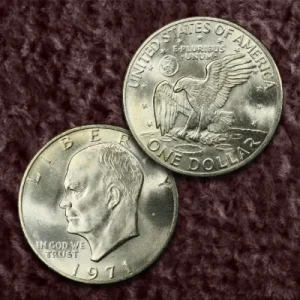
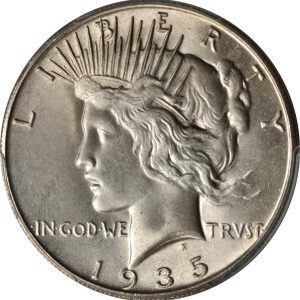
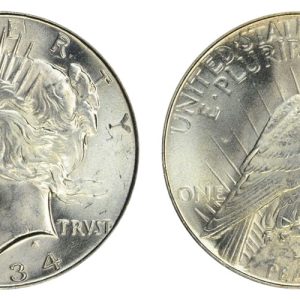
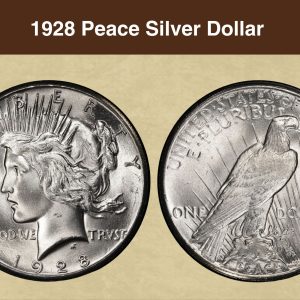
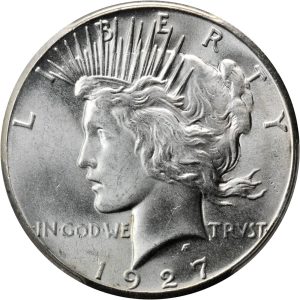
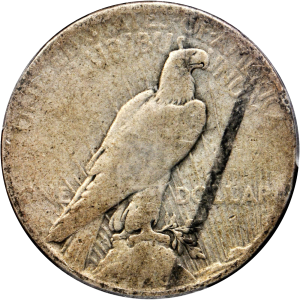
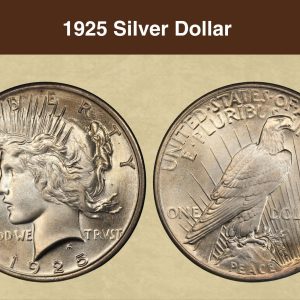
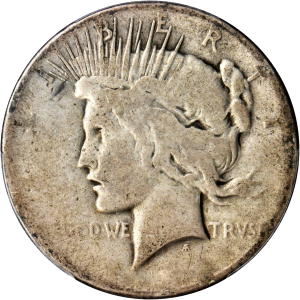
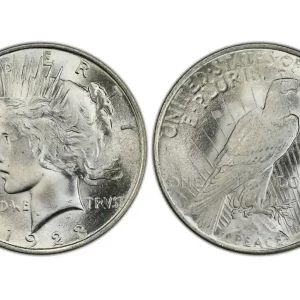
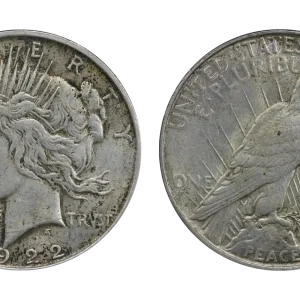
How much is a 1896 Morgan Silver Dollar worth today?
The value of an 1896 Morgan silver dollar varies from around $47 for a worn coin to over $1,695 for a high-grade, uncirculated version, with specific values depending heavily on its condition, mint mark, and eye appeal. Common 1896 Philadelphia (no mint mark) and New Orleans (“O”) issues in lower circulated grades are relatively affordable, while the scarcer 1896-S (San Francisco) version is more valuable in any grade.
Are there any rare varieties of the 1896 dollar?
While the 1896 Morgan Silver Dollar itself is not known for particularly rare varieties, the overall condition and mint mark (e.g., “O” for New Orleans, “S” for San Francisco) can affect its value. The “O” mint mark version is generally more valuable in higher grades.
What are the rare errors on Morgan silver dollars?
Some of the most sought-after VAM varieties include the 1878-P 7/8 Tail Feathers, the 1879-P Reverse of 1878, and the 1887-P Doubled Ear. Clashed Dies : Clashed die errors occur when the obverse and reverse dies strike each other without a planchet in between, leaving impressions from one die on the other.
Where do you find the mint mark on a 1896 silver dollar?
The mint mark on an 1896 silver dollar is on the reverse (back) side, located below the eagle, between the letters “O” and “L” in the word “DOLLAR”. If there is no mint mark, it was minted at the Philadelphia Mint.